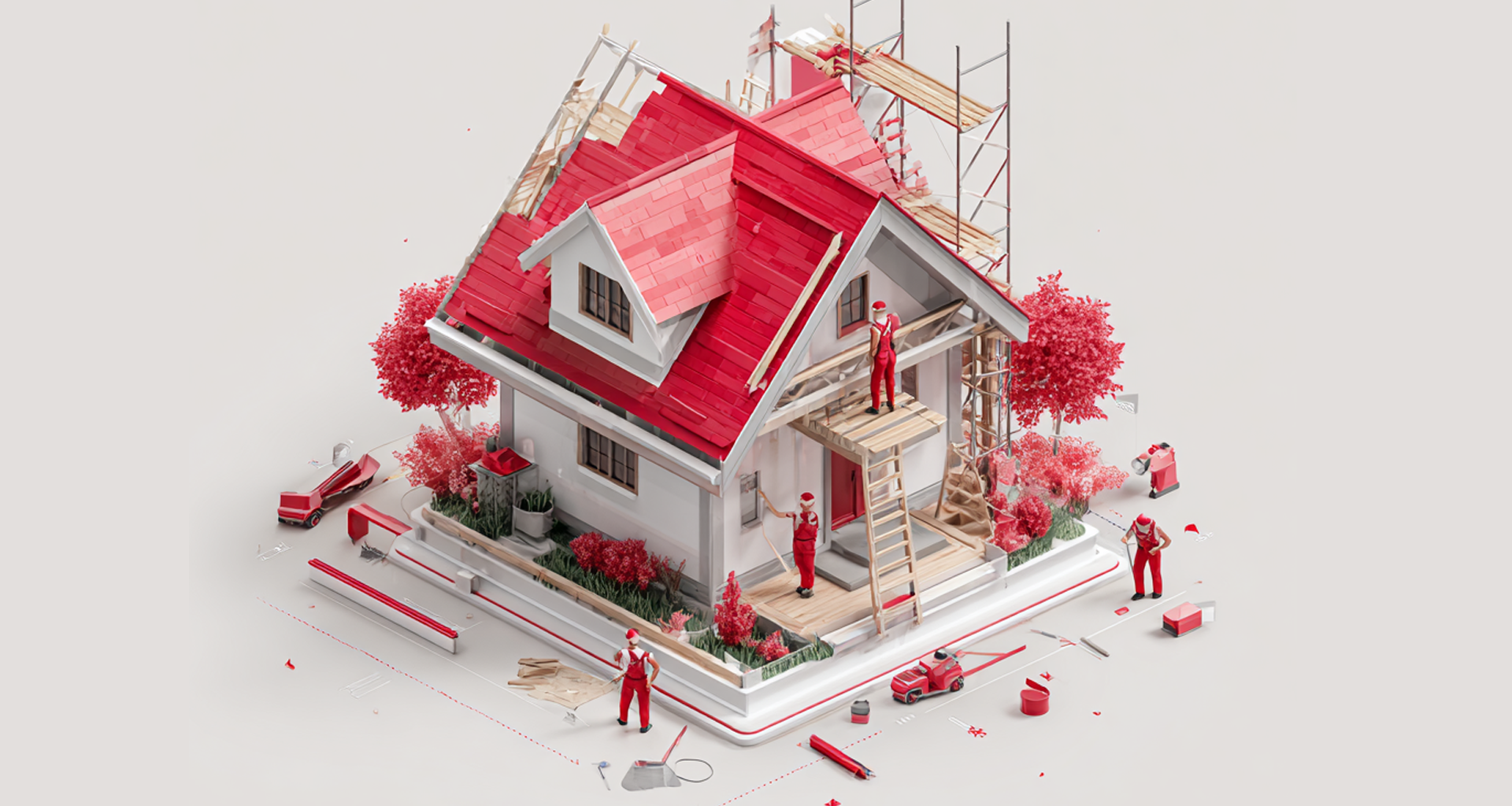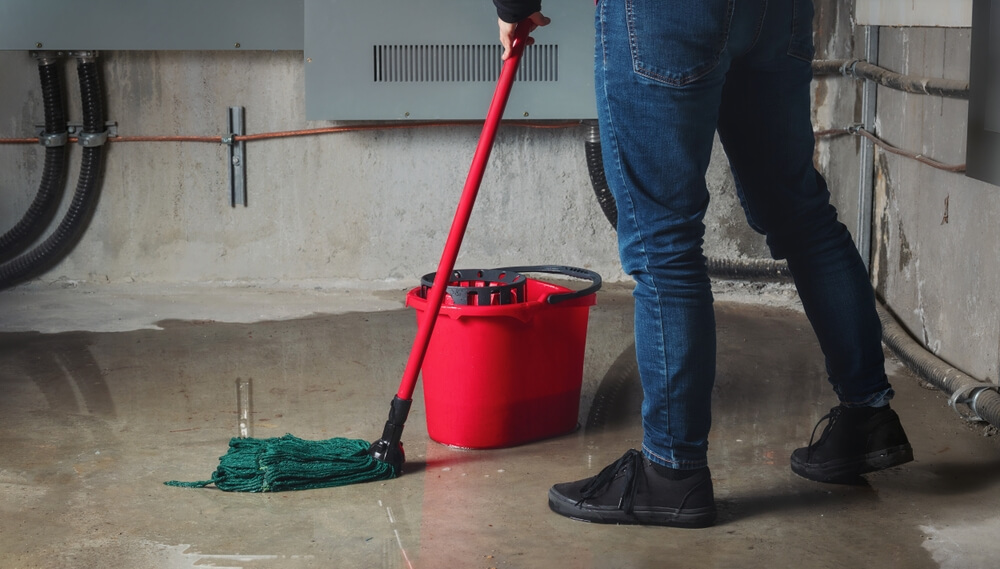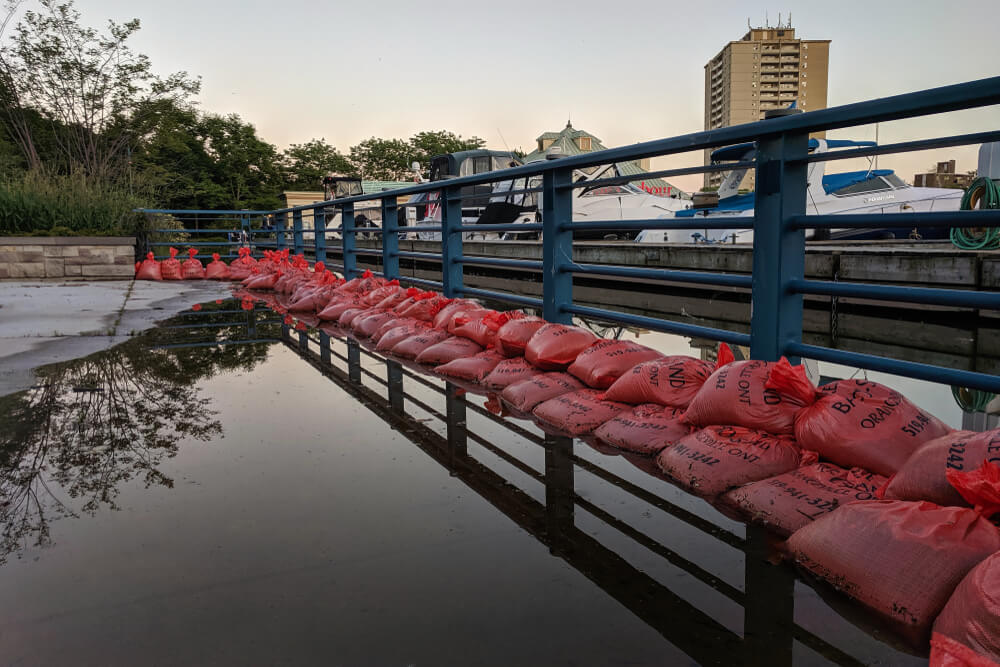Compare Alberta Home Insurance Quotes
Compare and save an average of over $600* on Alberta home insurance with Rates.ca. Get a better rate.
Compare Alberta home insurance quotes from providers you trust
Jump straight to...
- Home insurance in Alberta
- Different types of home insurance coverages in Alberta
- Add-ons to home insurance coverage in Alberta
- What an Alberta home insurance policy may not cover
- Recent Alberta home insurance quotes
- What determines the cost of home insurance in Alberta?
- How to get the cheapest home insurance coverage in Alberta
- Alberta home insurance premium trends by quarter
- Alberta home insurance premium trends (2011 - 2024)
- Average Alberta home insurance premium by city
- Frequently asked questions about home insurance in Alberta
Home insurance in Alberta
Buying or owning a home in Alberta does not legally require you to have home insurance. That said, if you intend to take out a mortgage so you can purchase that home, your lender will require you to have home insurance – to protect their investment.
So, in an indirect way, home insurance is mandatory. Unfortunately for many homeowners, premiums have been on the rise, making home ownership – combined with high mortgage rates – a very expensive proposition. Let’s examine why that is and what you can do to lower those costs.
Climate change and rising damage costs
Severe weather brought on by climate change has been one of the most significant factors behind home damage in recent years. According to the Insurance Bureau of Canada (IBC), severe weather cost the country $3.1 billion in insured damage in 2023 alone. This wasn’t the first time severe weather damage exceeded the $3 billion mark, as this has been a recurring phenomenon for several consecutive years. In 2023, summer storms cost Alberta and the Prairies over $300 million in insured losses. There is also the increased prevalence of seasonal wildfires throughout the province, which have gotten worse in the last decade, with 2023 being a record-setting year for the entire country.
The 2023 IBC Fact Book shows that from 1983 to 2022, catastrophic losses have risen dramatically in both Alberta and Canada at large. For example, from 1983 to 2000, average catastrophic losses in Canada amounted to $440 million per year (loss and adjusted expenses in 2022 dollars). Between 2011 and 2020, those losses rose to the average of $2.3 billion. Alberta is no exception. In 2016, for instance, the Fort McMurray wildfire accounted for 75% of Canada’s national losses. Though the province hasn’t seen such losses since, wildfires continue to be a costly problem in 2024 – alongside hails, windstorms and flooding.
Higher home insurance premiums
With the losses being this high, home insurers have no choice but to increase their premiums. In Q3 2024, personal property premium rate change was 7.7% nationally – compared to Q3 2023. Relative to Q2 2024, the rate change was -0.4%. In Alberta, the rate change in Q3 2024 was 5.5% compared to Q3 2023 and -1.5% compared to Q2 2024. Overall, Alberta’s premium increases are below the national average, which is good news. The bad news is that premiums are continuing to increase.
So, what can you do as a homeowner? Start by learning about different types of coverage, so you can customize your home insurance policy accordingly – and hopefully decrease those costs.
Different types of home insurance coverages in Alberta
Home insurance usually comes in four different flavours, depending on the amount of coverage you’d like to get – or in some cases, allowed to get (as your home may not be safe enough to warrant standard coverage).
These are the coverage types you’re likely to encounter:
- Named perils: This package offers the least amount of coverage for your house and contents; your home is only protected against perils explicitly named in your policy. If it isn’t named in your policy, you don’t have insurance protection against it. You may also see some insurance providers describe this type of policy as ‘basic’ or ‘limited.’
- Broad form: A broad home insurance policy gives more coverage; it provides all perils coverage to your home and named perils coverage to your contents. Some insurance providers describe this type of policy as ‘standard.’
- Comprehensive: This is the most inclusive and costly type of home insurance. A comprehensive policy applies all perils coverage (except for exclusions listed in the policy) to your home and contents, as indicated in the policy. This type of coverage is sometimes referred to as an ‘all perils’ policy.
- No-frills: This is the most bare-bones coverage you can buy and is not recommended for most homeowners, as it usually only protects your property against a handful of perils (usually fire and nothing else). This coverage is meant for old or damaged homes that are too risky to insure under normal circumstances. Given that such homes are often unlivable, homebuyers typically use no-frills insurance to temporarily protect the home until it is made more insurable.
What gets covered
- Property and building: This coverage protects both the structure(s) on your property, as well as the property itself, from a variety of perils. Protected incidents include fire, theft and water damage, among others. Because some policies may require additional coverage for secondary structures, like a garage or guest house, consult your insurer if anything is unclear.
- Contents and personal property: Contents and personal property coverage protects your possessions, such as furniture, clothing and sports equipment, against theft and vandalism. Some items, like fine art and expensive jewelry, may not be protected under a standard policy. Excluded items can be protected with additional coverage.
- Additional living expenses: If you’re temporarily displaced by an insurable event, this protection covers your temporary housing costs. For example, if damage to your home forces you to spend a week at a hotel, additional living expenses protection will cover the cost of the room and food, up to a certain amount.
Liability coverage
- Personal liability: This coverage provides protection against liability in the event someone is accidentally injured on your property.
- Voluntary medical payments: If you unintentionally injure someone, or someone accidentally injures themselves on your property, this coverage will pay for the medical expenses for up to one year from the date of the accident.
- Voluntary property damage: This coverage is for unintentional direct loss or damage you cause to someone’s property. It also covers unintentional loss or damage to someone else’s property by a minor (12 years or under) in your care.
Add-ons to home insurance coverage in Alberta
In addition to the components of an Alberta home insurance policy, there are add-on coverages you can purchase to further protect your home and contents.
Some you can add to your home insurance policy include:
- Earthquake: Will cover loss or damage caused by an earthquake which is especially useful in your home is in an area that's vulnerable to earthquakes.
- Identity theft: Covers many of the costs that can arise when your identity is stolen. For example, costs for replacing important government-issued documents, such as your passport, lost wages resulting from having to take time off work to deal with the theft as well as any costs associated with challenging damaged credit reports, dealing with collection agencies or initiating a lawsuit to resolve the wrongful transfer of property.
- Lock replacement: If you need to replace the locks on your house, this add-on will cover the cost of re-keying. If your keys have been stolen, most insurance providers require that a police report be filed before a claim is paid out.
- Mass evacuation: This add-on will cover your costs if you're forced to be away from your home due to a government-issued evacuation order such as that many Albertans experienced during the historic wildfires in Fort McMurray in 2016, which IBC estimated to be among the costliest in Canadian history.
- Windstorm: A windstorm can wreck your home’s structure, possessions and windows and shower everything you own in debris. Depending on your insurer and policy, you may have this covered from the get-go, but it’s worth inquiring about the coverage just in case.
- Overland water: It's a good idea to add flood protection to your home insurance policy since most of them don't have coverage built in. Although not every carrier offers an add-on for protection against overland water, it covers property damage from overflowing water stemming from nearby rivers, streams, lakes and thawing snow.
- Sewer back-up: Protects your home when a sewer line backs up and causes damage to the line between your home and the city's main line. In many instances, this add-on also covers the cost of removing sewer water from the home as well as repairing damage caused by it.
- Personal valuables: If you own expensive things like jewelry, collectibles and artwork, then you may need extra coverage for them. Do an inventory of all your possessions and assign monetary value to them. Then talk to your provider to find out if you need extra coverage.
- Personal umbrella: If you’re worried that your standard liability coverage isn’t enough (e.g. if your lawsuit costs you more than expected), this add-on can make up the difference.
What an Alberta home insurance policy may not cover
Even if you have the most coverage money can buy, having opted for every available endorsement, there are some perils against which no policy will protect you. In the insurance world, these are referred to as ‘exclusions.’
Common exclusions include:
- Mold: Since mold occurs slowly due to pre-existing conditions, such as extreme humidity, there is usually enough time for you to prevent it. Home insurance isn’t meant for maintenance – it's here to address major perils only.
- Pest infestations: Like mold, pest infestations, including mice, bedbugs, cockroaches and termites, are also a maintenance concern. That’s why it’s unlikely that your insurance would cover an infestation if it were to occur in your home.
- Deliberate damage or injuries: If you purposely damage your property (whether it’s the home itself or your personal items) or you deliberately hurt someone on your property, your insurance will refuse to cover you. In fact, if you file a claim for either of the two, you may be accused of insurance fraud, which is illegal.
- Absence from the home: Damage that takes place while you’re away from the home for an extended period of time.
- Alterations: A homeowner will only be protected against damage to a property that occurs during an alteration to it if they have received written permission from the insurance provider to undertake the alteration. However, common repairs such as painting or fixing a broken railing are not subject to this exclusion.
- By-law enforcement: You are not likely to be covered for costs stemming from the application or enforcement of a bylaw.
- Damage from renters: Most insurance providers require specific coverage for landlords. A standard home insurance policy is unlikely to protect you if a renter damages the property.
- Earthquake: Most policies exclude protection against earthquakes, though you can add coverage in the form of an endorsement.
- Existing damage: You’re unlikely to be covered for damage that began before you held the policy, even if the policy covers that type of damage.
- Flooding: Most policies exclude flood protection, though coverage can be purchased as an endorsement.
- Volatile substance: If you have more than one gallon of a volatile substance on your property and a fire or explosion takes place, you may be denied coverage. This is likely to include gasoline.
There are also some perils for which no coverage is available. They’re referred to as ‘uninsured perils.’ For example, if your home is built on a known flood plain, no insurance protection may be available.
Recent Alberta home insurance quotes
Recent home Insurance Quote from Leduc, AB
Detached 2,600 sq ft
July 25, 2025
Cheapest Quote
$ 155 / month
$ 1,862 / yearAverage Quote
$ 251 / month
$ 3,013 / yearSavings
$ 96 / month
$ 1,152 / year
38 %
Recent home Insurance Quote from Airdrie, AB
Detached 2,262 sq ft
July 25, 2025
Cheapest Quote
$ 152 / month
$ 1,827 / yearAverage Quote
$ 222 / month
$ 2,664 / yearSavings
$ 70 / month
$ 840 / year
31 %
Recent home Insurance Quote from Canmore, AB
Townhouse 1,357 sq ft
July 25, 2025
Cheapest Quote
$ 252 / month
$ 3,019 / yearAverage Quote
$ 430 / month
$ 5,163 / yearSavings
$ 179 / month
$ 2,148 / year
42 %
Home insurance quotes are compared from Apollo Insurance, CAA, Economical Insurance, Pembridge, Square One Insurance, and SGI
What determines the cost of home insurance in Alberta?
When determining your home insurance premiums, Alberta insurance providers will look at the following factors:
Property type
The structure and size of your house impacts your insurance premium. For example, a house that is semi-detached comes with more liability than a fully detached home because damage may spread to another property.
Credit score
Alberta is one of the provinces where insurance providers are allowed to use your credit score to determine your rate, though it must be done with your consent. A poor credit score will not negatively impact your insurance premium, but a good or excellent credit score may earn you a discount.
Replacement cost
Your replacement cost is calculated by estimating how much it would cost to rebuild your home. Always ensure that you inform your insurance company about any renovations you’ve completed, so the replacement cost of your home can be changed to reflect the additions.
Location
Your home’s location matters a great deal when it comes to insurance rates. If your residence is exposed to risk factors, such as crime or natural disasters, your insurance premium will increase. For example, homes near airports face the risk of damage from falling debris or heavy vibrations. Similarly, a home near a lake or a river is exposed to the risk of flooding and other types of water damage.
Internal construction
The internal construction of your home, such as the electrical fittings and plumbing, directly affect your home insurance premium, as old installations are more prone to causing issues like fire or water leakage. Old wiring and fuse boxes increase the risk of fire and can also damage your home appliances. Similarly, old lead or clay pipes can burst, causing heavy water damage in your home. Water damage in a home can run you thousands of dollars in repairs. From damaged ceilings to damaged doors, water can really wreak havoc. It is crucial to check how old your electrical fittings and water pipes are. Updating them will allow you to decrease the cost of your insurance premium.
Roof
The insurer will check your roof by analyzing its material and age. A standard asphalt roof will show heavy wear and tear within 10 to 15 years, depending on external conditions. If your roof is old or weak, it may need repairs to prevent water leakage during the wet and cold months. If you have a metal roof, which is proven to be more resilient against wear and tear, your house insurance premium may go down.
Past claims history
The insurer will check how many claims you’ve made in the last five to 10 years. Frequent or failed claims can increase your monthly premium. Always remember to check if a problem can be easily fixed before filing an insurance claim.
Pets
Pet owners are exposed to extra liability because visitors who are attacked may file a lawsuit. Additionally, exotic pets like boa constrictors carry a high value, which may further raise your premium.
Special use
If you use part of your home for professional reasons, it may affect your home insurance premium. Using your home as a part-time daycare or Airbnb rental, for example, means a greater chance for damage and liability claims.
Pool and other accessory dwellings
Having a swimming pool on your property affects your insurance premium because of the replacement cost and the risk of a visitor drowning. Other accessory dwellings, like a tree house or outhouse in your backyard, will similarly increase risk, and in turn, the premiums you pay for a home insurance policy.
How to get the cheapest home insurance coverage in Alberta
When it comes to reducing the cost of home insurance in Alberta,, it’s all about mitigating risk for the provider. Consider some of the following tactics:
- Bundle your policies: When a single provider holds each of your insurance policies, you’re likely to receive a discount of up to 15% for your Alberta home insurance quote. For example, to save, consider purchasing your home and car insurance policies from the same company.
- Compare rates: Regardless of the insurance coverage you seek, comparison shopping is the best way to secure coverage. The Rates.ca free, online tool will aggregate every home insurance quote available to you and highlight which is the best coverage at the lowest rate.
- Consent to a credit check: In Alberta, you may be eligible for a discount on your home insurance if you consent to a credit check. Don’t worry, you can’t be penalized for a poor credit score. On the upside, you can save if you have a good score.
- Keep your home in good repair: Take reasonable steps to make sure your home is secure against covered perils such as installing smoke and carbon monoxide detectors. Since any home insurance policy is unlikely to cover the cost of damage from neglect, make sure you keep up on regular home maintenance.
- Increase your deductible: When you opt for a high deductible, your monthly costs will be lower. However, if you take this approach, make sure you have the available cash flow in the event of a claim.
- Install a backwater valve: Prevent flood damage from sewer back-up with this mechanism will automatically close if sewage backs up from the main sewer.
- Install a security system: When you can reflect to an insurance provider that you’ve taken steps to mitigate risks to your home, you may be rewarded with a discount. Installing a security system will underline to them that the likelihood of damage to the property by an intruder is diminished.
- Memberships: You may be eligible for discounts through various groups you hold membership with such as an alumni association.
- Pay upfront: If you pay your annual premium upfront, you may be eligible for a discount.
Alberta home insurance premium trends by quarter
According to the Applied Rating Index, the Canadian insurance industry’s premium rate index, home insurance premiums have been steadily rising. In the third quarter of 2024, Alberta saw a 5.5% average year-over-year increase in personal property premium rate – a noticeably higher increase than the one reported in the third quarter of 2023, which was only 1.0%.
| Quarter | Average property insurance premium changes |
|---|---|
| Q3 2024 | 5.5% |
| Q2 2024 | 5.8% |
| Q1 2024 | 10.5% |
| Q4 2023 | 0.7% |
| Q3 2023 | 1.0% |
| Q2 2023 | 7.1% |
| Q1 2023 | 5.1% |
| Q4 2022 | 10.0% |
| Q3 2022 | 11.6% |
| Q2 2022 | 8.1% |
| Q1 2022 | 10.0% |
Note: The percentages listed above are derived from comparing rates from one quarter to the same quarter in the prior year (e.g., Q3 2024 is compared to Q3 2023).
Source: The Applied Rate Index (Q3 2024)
Alberta home insurance premium trends (2011 - 2024)
Home insurance prices have been rising year over year in Alberta for over a decade. However, the increase hasn’t been as consistent throughout the 2010s as it is in the 2020s so far, with prices occasionally rising by 5%-15% year over year or falling by around 2% year over year. During and after the COVID-19 pandemic, prices started rising in much larger increments, with 2021 seeing a year-over-year increase of 23.83% and 2022 an increase of 31.48%.
There are multiple reasons for the severe rise in premiums, most of which apply to the whole country, not just Alberta. For one, the increase in severe weather events has led to more claims filed every year. According to IBC, insured damage for severe weather exceeded $3 billion for multiple consecutive years in Canada. Between 2020 and 2023, extreme weather cost Alberta $3.6 billion in insured losses. In 2023, property damage in the province exceeded $330 million.
In addition, construction costs in Canada have been soaring since the beginning of the pandemic. Residential building construction costs – which reflect the value of all materials, labour, equipment, overhead and profit to construct a building – have increased 61% between 2019 and 2024. Labour shortages add to those costs as well, as 25,000 to 28,000 construction workers are projected to retire every year until 2033. As a result, claims are not just plentiful – they are expensive too.
To mitigate those expenses, insurers have no choice but to increase their premiums.
According to data from Rates.ca’s Home Insuramap, the average annual cost of insurance for homes in Alberta is $2,339 (as of our latest research). Innisfail has the lowest average premium in the province, at $1,637 per year, followed by Devon and Wainwright, at $1,769 and $1,770 per year, respectively.
The cheapest home insurance cities in Alberta
| City | Annual premium |
|---|---|
| Innisfail | $1,637 |
| Devon | $1,769 |
| Wainwright | $1,770 |
| Alder Flats | $1,867 |
| Parkland County | $1,871 |
| Fort Saskatchewan | $1,883 |
| Edmonton | $1,883 |
| Ponoka | $1,939 |
| Fort Chipewyan | $1,946 |
| Strathmore | $1,956 |
How to get your Alberta home insurance quotes on Rates.ca
Ready to compare quotes and save?
Tell us about your home
Answer a few basic questions about your home. It won't take long!
Compare your quotes
See quotes from top insurance companies side by side.
Choose the right coverage
Find the right protection for your home and everything in it.
Secure your rate
Connect with the provider and secure your rate.
What people say about our quotes

Based on 6,452 reviews

Easy Peasy!!
Ratesdotca made it so easy to find travel insurance. I love one stop shopping!
Donna Ross

Was easy to apply and didn't take long
Was easy to apply and didn't take long. Prices were amazing as well. Received an email confirmation immediately after applying for.
Shaun

Fast efficient and fair
Quick quotes. Great rates. Easy to process
Trinity

Comparing Travel Insurance …
This was the only site I could find that allowed me to compare different travel insurance options. I particularly liked the ability to look at sample documents.
Toronto

Amazing
Very helpful and easy to use
Safe travels

Easy quick selection of rates
Easy quick selection of rates
J K
Frequently asked questions about home insurance in Alberta
Here’s everything you may be wondering about home insurance coverage in Alberta
Who has the best home insurance rates in Alberta?
No home insurance policy is a one-size-fits-all solution. Finding the best home insurance policy for your home in Alberta involves comparing quotes from top provincial insurance providers. On Rates.ca, you can instantly compare the best home insurance quotes in Alberta and pick the policy of your choice.
How do I save on home insurance in Alberta?
You can save money on Alberta home insurance by comparing quotes from the top home insurance providers in the province. You will also receive a discount if you bundle your home insurance policy with your auto insurance policy. Learn more ways to save money on your home insurance premium.
Is fire insurance mandatory in Alberta?
No, fire insurance is not mandatory in Alberta nor is home insurance. That said, lenders (especially A lenders) will only mortgage properties that are protected by home insurance. And while they don’t require your insurance to have fire coverage, every home insurance policy – even the most basic one – would have fire coverage. Fire coverage covers all instances of fire – whether it’s started by a lightning strike, gas leak, faulty electrical wiring, arson, candle, cigarette or seasonal wildfire.
Wildfires in particular have become a huge problem in Alberta over the last decade, with 2024 seeing even more wildfires than 2023 – though the total area burned in 2024 is a mere fraction of the total area burned in 2023. 2023 broke the record in terms of the total area burned, with more than 18.5 million hectares of land affected.
Even so, the 2016 wildfire in Fort McMurray remains the most notable instance of such an event in the province, having resulted in more than $5.2 billion in total losses.
What are the most common risks homeowners face in Alberta?
While we recommend that homeowners in most parts of Canada add flood protection to their home insurance policy, it’s an especially good idea for homeowners in Alberta where extreme weather is common.
In fact, flood protection is an increasingly wise investment in many parts of Canada, including Alberta, where snaps of extreme cold can cause significant thaws and overflowing waterways as well as wreak havoc on water pipes. Most home insurance policies include protection against water damage such as that which might occur if a pipe freezes and bursts, but protection against flood usually must be purchased as additional coverage.
The IBC reflects that severe weather events in Alberta account for a large portion of record-high insured damage. Between 2020 and 2023, extreme weather cost the province $3.6 billion in insured losses. For comparison, between 2001 and 2010, insurers in Canada averaged $675 million per year in losses due to severe weather.
While the 2016 wildfire in Fort McMurray remains the most devastating and expensive one in the province, wildfires overall have become more prominent both in Alberta and Canada as a whole, especially if we look at the number of wildfires and total area burned throughout 2023 and 2024. Generally, every home insurance policy should cover fire and smoke damage, which includes damage from wildfires. Most policies should also pay for additional living expenses for covered perils such as fire or flooding should you become displaced from your home due to an evacuation order or the peril itself.
If I use my home as an Airbnb, does my home insurance cover it?
If you are renting out your home, or a part of it, policy add-ons may be required. Or, depending on the renter’s length of stay, you may need a separate policy altogether.
Start by consulting your insurance provider to clearly understand your options. Many home insurance policies, including their liability and contents protection, are void if the policyholder has been absent for an extended period of time – between 30 and 90 days.
If you end up getting short-term rental insurance, you’ll be protected against damage or theft by tenants as well as be eligible for income replacement if your unit becomes uninhabitable due to damage. You can also get coverage for the cost of replacing locks and keys.
When it comes to hosting services like Airbnb or Vrbo, you may require host liability insurance. This coverage is automatically provided to you once you decide to rent out your property through one of these services. It’s worth noting, however, that you should still notify your insurance provider about this to ensure that your policy is up to date and there are no surprises in the event of a claim.
*Shoppers in Alberta who obtained a quote on Rates.ca from January to December 2023 saved an average amount of $600. The average savings amount represents the difference between the shoppers’ average lowest quoted premium and the average of the second and third lowest quoted premiums generated by Rates.ca. Excludes tenant and condo insurance.
Latest home insurance articles:
Find more great home insurance rates
Get money-saving tips in your inbox.
Stay on top of personal finance tips from our money experts!










